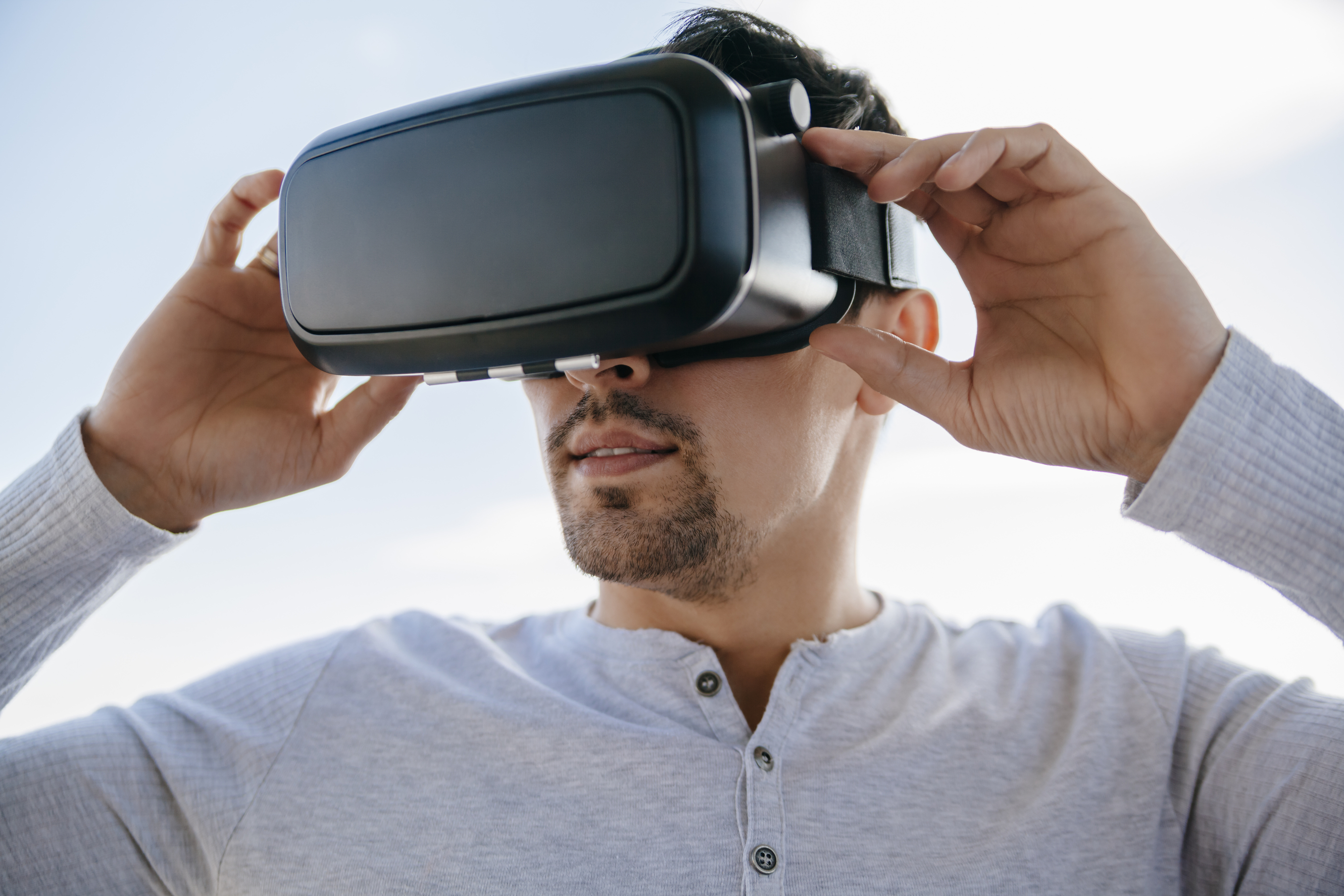Virtual reality in construction
The term 'virtual reality' (VR) refers to a simulated environment in which an interactive computer-generated user experience can take place. It typically uses VR headsets or multi-projected environments, as a means of generating images, sounds and sensations that can simulate a real environment that a user can observe or interact with.
VR is distinct from augmented reality (AR), which is a live direct or indirect view of a physical, real-world environment whose elements are augmented (or supplemented) by virtual computer-generated sensory input such as sound, video, graphics or information. In other words, AR is a blend of the real environment with the virtual in which the former is enhanced in some way by the latter.
While VR was developed predominantly for the gaming and entertainment industries, it has started to be used in the construction sector. Primarily this takes the form of simulating a building, structure or space in which users can immerse themselves prior to it being constructed in reality. This enables designers and other construction professionals to test ideas, components and features before committing to them for construction. It can also help identify potential conflicts or problems before construction work has started and alterations become more costly.
In addition, VR can be used to simulate workspaces for the purposes of providing training and health and safety guidance. By exploring, gaining familiarity with, and practising in, a simulated environment, knowledge and skills can be developed without any of the potential real-world consequences.
VR can also greatly benefit the client by being able to experience the project in a virtual realm, enabling them to review the design and decide whether it meets their requirements. Small details can be picked up on that might be overlooked in a traditional computer-aided design (CAD) model or with building information modelling (BIM). It is therefore useful at the earlier stages of the design process but also at the later stages. VR is also increasingly also being used as a tool for training purposes such as site as building safety, fire and construction knowledge.
[edit] Related articles on Designing Buildings
- 3D MOVE: Mobile Immersive Visualisation Environment.
- A brief history of virtual reality.
- Advanced construction technology.
- Augmented reality in construction.
- Big data.
- Cobots.
- Computer-generated imagery (CGI).
- ConTech.
- ConTech in a post lockdown, pre-vaccine economy.
- Customised virtual reality health and safety training.
- Eyeware app.
- Immersive Hybrid Reality iHR.
- Information for the buildings of tomorrow.
- Metaverse.
- Mixed reality.
- Robots.
- Spark framework RM6094.
- TruVision.
- Virtual construction model.
- Virtual reality and big data disrupting digital construction.
- Virtual reality and manufacturing.
- Virtual reality construction experience for students.
- Visualisation.
Featured articles and news
One of the most impressive Victorian architects. Book review.
RTPI leader to become new CIOB Chief Executive Officer
Dr Victoria Hills MRTPI, FICE to take over after Caroline Gumble’s departure.
Social and affordable housing, a long term plan for delivery
The “Delivering a Decade of Renewal for Social and Affordable Housing” strategy sets out future path.
A change to adoptive architecture
Effects of global weather warming on architectural detailing, material choice and human interaction.
The proposed publicly owned and backed subsidiary of Homes England, to facilitate new homes.
How big is the problem and what can we do to mitigate the effects?
Overheating guidance and tools for building designers
A number of cool guides to help with the heat.
The UK's Modern Industrial Strategy: A 10 year plan
Previous consultation criticism, current key elements and general support with some persisting reservations.
Building Safety Regulator reforms
New roles, new staff and a new fast track service pave the way for a single construction regulator.
Architectural Technologist CPDs and Communications
CIAT CPD… and how you can do it!
Cooling centres and cool spaces
Managing extreme heat in cities by directing the public to places for heat stress relief and water sources.
Winter gardens: A brief history and warm variations
Extending the season with glass in different forms and terms.
Restoring Great Yarmouth's Winter Gardens
Transforming one of the least sustainable constructions imaginable.
Construction Skills Mission Board launch sector drive
Newly formed government and industry collaboration set strategy for recruiting an additional 100,000 construction workers a year.
New Architects Code comes into effect in September 2025
ARB Architects Code of Conduct and Practice available with ongoing consultation regarding guidance.
Welsh Skills Body (Medr) launches ambitious plan
The new skills body brings together funding and regulation of tertiary education and research for the devolved nation.
Paul Gandy FCIOB announced as next CIOB President
Former Tilbury Douglas CEO takes helm.























